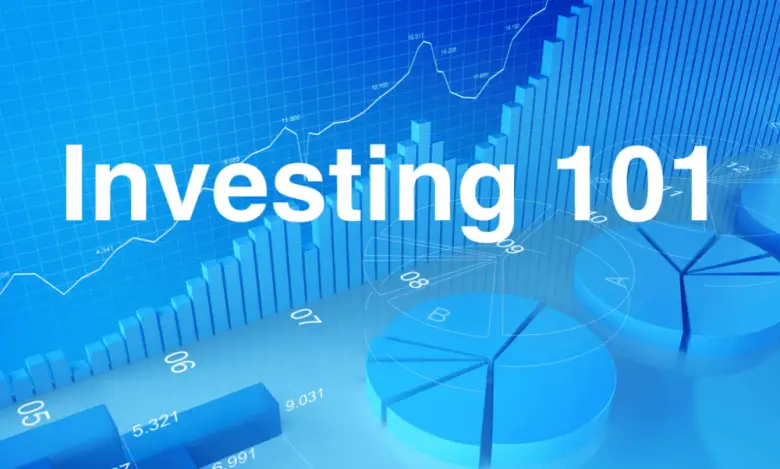Investing may seem scary, but it’s not. With the right tools, anyone can learn how to get rich and stay wealthy long-term. Investing is all about making your money work for you and growing it in different ways. This book aims to educate novice savers on the fundamentals and equip them with a strategy to embark on their financial journey confidently.
How to Start Investing:
It’s important to understand what investing means before you start. Simply put, investing is putting money into things or businesses in the hopes of getting a return in the long term. Such investments can be anything from mutual funds, stocks, and bonds to real estate and homes. While the goal of investing is to make more money, it also comes with certain risks. To successfully invest, you must first understand how risk and return are related.
People often confuse investing and saving, but they are not the same thing. Saving means keeping your money in a safe, low-risk place, such as a savings account, for short-term purposes or emergencies. Investing, on the other hand, is a long-term commitment to grow your money, which involves some market risk.
Research Real Estate, Stocks, Bonds, Mutual Funds, and More:
You not only need to know what buying is, but you also need to understand the different types of investments. Stocks, bonds, mutual funds, and real estate are the four most popular choices for beginning investors.
Stocks are a way to acquire a stake in a company. When you buy stocks, you receive a share of the money and assets that the company earns. Stock prices can rise or fall quickly, depending on market performance, company performance, and general economic conditions. However, they usually provide high returns over the long term.
Bonds, on the other hand, are loans that people make to companies or countries. When you buy a bond, you are essentially giving money in exchange for interest over some time. Bonds are less risky than stocks, making them a beneficial choice for investors looking for safety.
Mutual funds take money from different investors and invest it in various stocks, bonds, and other securities. They are managed by professional fund managers and are a great option for beginners because they offer quick diversification and limit the risk of each investment.
Another way to make money is to buy real estate as a business. You can rent out the property and watch its value increase over time. Real estate can be a more tangible and potentially profitable asset class, but it does require a larger initial investment than other types of investments.
How to Determine Your Risk Appetite and Investment Strategy:
Knowing how much risk you are willing to take is one of the most important parts of investing. It refers to how well and willingly you can deal with changes in the value of your investments without feeling anxious or having to make hasty decisions. How much risk someone is willing to take depends on their age, income, financial goals, and how comfortable they are with unpredictability.
For example, younger buyers are more willing to take on risk because they have more time to recover from market declines. As you get older, retiring may be a good idea. Low-risk options may be a better choice. There are three main ways to invest, depending on how much risk you are willing to take:
Active strategies focus on high returns and are suitable for investors who are willing to take risks. They use stocks and other assets.
Often, a moderate strategy uses a combination of stocks and bonds to achieve the best risk and return.
Bonds, certificates of deposit (CDs), and money market funds are important components of a conservative plan because they offer stable, safe returns.
Knowing how much risk you are willing to take can help you build a portfolio that matches your financial comfort level.
Get Investments that Match Your Financial Goals:
Investing without a clear goal is akin to sailing without a boat. Before spending, you must know your goals. Common financial goals include saving for a house, paying for a child’s college tuition, building a retirement fund, or becoming financially independent.
After setting goals, you can set deadlines and allocate resources. Safer options like bonds or high-yield savings accounts may be the best choice for short-term goals, such as saving for a trip a year from now. Investing in things that grow over time, like stocks and mutual funds, may help you achieve long-term goals like retirement.
Whatever your goals, having a plan will help you stay on track and adjust your strategy as needed. Regularly checking in with yourself can help you stay on track by ensuring your investments are still helping you achieve your goals.
Open an Investment Account and Make Your First Deposit:
For first-time buyers, taking that first step is often the hardest part. Open a financial account to begin your journey. This could be an investment account if you want to buy and sell stocks and bonds, for example. For retirement, you might choose a 401(k) or IRA. These offer tax deductions.
Cost, ease of use, available tools and resources, and the number of investment options are all things to consider when choosing a brokerage firm. Nowadays, many platforms offer free trading and easy-to-use interfaces, making them ideal for beginners.
Once you create an account, you’ll start with a small amount of money. Many sites allow you to buy small amounts of stocks, so you don’t need to put down a lot of money to start investing. To reduce risk, you can spread your investments across different types of assets to diversify your wealth.
Start Earning More Money Today:
Investing is one of the best ways to achieve financial freedom and secure your future. By learning the basics, researching investment options, and creating a plan that aligns with your goals, you’ll be setting yourself up for success. Take the first step by opening a savings account and depositing some money into it.
FAQs:
1. How much money do I need to start investing?
The good news is that you don’t have to be rich to start saving. Many sites let you get started for as little as $5 or $10. Don’t worry about the amount; instead, focus on developing a habit of consuming regularly.
2. What’s the difference between active and passive investing?
Active investing involves buying and selling assets every day in an attempt to outperform the market (such as day trading). Passive investing, on the other hand, focuses on achieving long-term growth, such as by investing in index funds that track the market.
3. What are ETFs and index funds?
If you want to track the performance of a market index, such as the S&P 500, you can buy an index fund or an exchange-traded fund (ETF). ETFs trade on the stock exchange, just like individual stocks, while index funds are purchased directly from the companies that issue them.
4. How to Deal with Tax Issues When Investing?
Investments can generate income that is subject to tax, such as capital gains. IRAs and 401(k)s are tax-advantaged accounts that can help you pay less in taxes. If you are unsure about how an investment will affect your taxes, consult a financial advisor.
5. Are there risks to investing?
Yes, all investments involve risk. However, knowing your risk and diversifying your investments can help you avoid losing too much.




